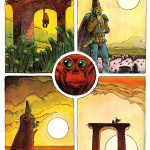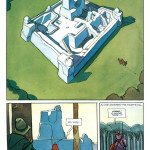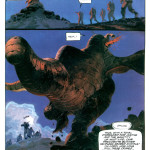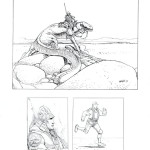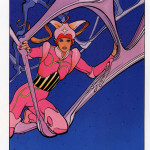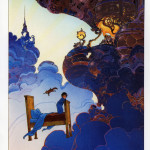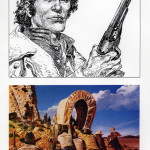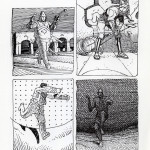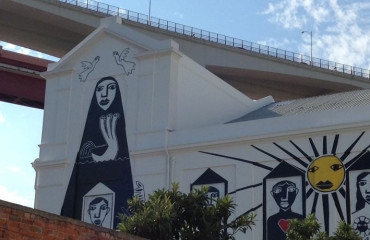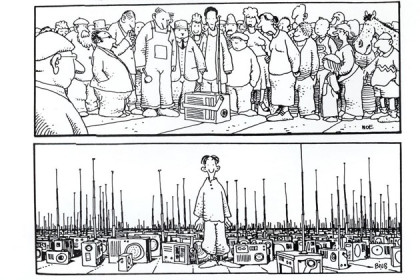
The essence of Jean Giraud lies right in the choice of the pseudonym that has made him popular all over the world: Moebius, referring to the figure created by the German mathematician who, imposing a twist to a ring, showed the form that has only one side and only one edge. A strip closed together on the short side, which has neither front nor back. Following the profile is passed from side to side in continuity, without interruption of shape and space. The suggestions of the Möbius strip allows the succession of dimensional exchanges, eternal gestures, poetic suggestions suspended between dream and reality, splitting and distortion of spacetime. A continuous and harmonic solution. A form whose effectiveness lies in its symbolic value as a model of contemplation. The graphical representation of the sense of continuity.
In this sense must be considered the life and work of the Parisian, who trained at the Franco-Belgian school of western comic, signing twenty-nine volumes of Blueberry, a true publishing success during which he skillfully blends the traditional structure of the school of Joseph Gillain, the stylistic film by John Ford and Sergio Leone, giving the comic narrative fluidity further enhanced by the new dramatic tension of the line drawing. The fortune of Blueberry, signed by GIR, allows him to pursue his own projects, signing his freedom of expression as Moebius. At the beginning of the seventies in France stated the movement of the “adult” comic, deriving from the United States underground and by the desire to break free from the censorship imposed on publications for children.
“At the time I was often in a state of exaltation… I came home in a hurry to draw a page, sometimes two, until night, till I drop exhausted. In the morning, I could find myself in front of absurd or uninteresting tables, but sometimes I happened to complete some of them in order to make stories of four or six pages. The first two pages were nothing but a graphics hoax, a sham that could not and should not lead to nothing. However I tried to transpose a part of what I was, what I lived or had lived. And put the tables in a drawer and forgot them”.
Jeanne-Pierre Dionnet had a habit of going through the drawers of Giraud and published it in Métal Hurlant, where the experimental spirit and the new expressive power of Moebius reveal themselves. On those pages came out the series The Airtight Garage of Jerry Cornelius, the hieratic Arzach, and from 1981 to 1988 the 291 pages of Incal written by Alejandro Jodorowsky. Suspended between surrealism and post-modern baroque Moebius is told through a minimalist and simple design. He tells stories infused with wit and grotesque humor, faces real paths of spiritual growth through the vehicle of fantasy and dreams, giving every single graphic element a balanced and timely emotional charge.
 English
English  Italiano
Italiano 


